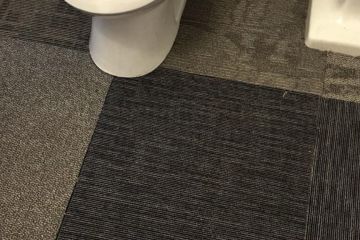How much money should you have in your bank account to get through a crisis?

With the rapid spread of the coronavirus hitting Australia, many people have begun wondering how much they need in their bank accounts to withstand the pandemic’s economic shocks.
Of course, no one knows at this stage how long the crisis may last, but most experts agree: you really need a lot more cash in reserve than you’d imagine.
“You’d perhaps normally want enough money to survive three months in the case of a downturn but, in these exceptional circumstances, you can double that,” said Steve Mickenbecker, group executive, financial services at financial comparison site Canstar.
“Normally it might take three, four or five months for someone who’s lost their job to find other work, but now it’s going to be much harder. Even when companies do have vacancies on their books, they’re now deciding not to fill them, and you’re seeing declines in both the domestic and international markets.”
Even if you could get by with savings that would last you three months, that’s a luxury few in Australia currently enjoy. Canstar’s 2019 Consumer Pulse Report found that nearly a quarter of the nation have no savings at all while, of those not saving anything, almost three-quarters are living pay cheque to pay cheque.
That’s a finding backed up by the country’s leading independent policy think-tank, the Grattan Institute. In their analysis of Australian Bureau of Statistics data, about 10 per cent of working households – those in which at least one person has a paid job – have less than $90 in the bank.
In addition, half of all working households have less than $7000 in savings to cushion them in times of trouble, roughly equivalent to five and a half weeks’ income. The bottom 40 per cent have about three weeks’ income or less in the bank; and a quarter have less than one week’s income.
“Many Australians working in retail, tourism or the arts are already losing their livelihoods, while many more will be on reduced incomes,” said Brendan Coates, the Grattan Institute’s program director, household finances. “The big challenge in the weeks ahead is having enough money to pay the bills.
“Housing costs – either rent or the mortgage – typically account for around 20 to 25 per cent of households’ spending. Food is next at around 17 per cent. For many Australians it’s too late now to prepare for this crisis. They’ve already lost their livelihoods inside a week.”
But, happily, it’s not all doom and gloom. It’s likely that households will save on some big expenses, believes Coates, especially transport (15 per cent) and recreation (12 per cent).
In addition, both the federal and state governments are providing support to Australians who’ve lost their livelihoods, or who run hard-hit small businesses, and the banks have already signalled they’ll be offering loan and mortgage repayment deferrals.
“If you’re repaying $3000 to $4000 a month on a mortgage, then you can live on that virtually for a month,” said Mickenbecker. “But for those paying rents, it’ll be harder to offer help as there are hundreds of thousands of landlords involved.
“But the government will need to step in to help people out with interest-free loans or other aid. No one wants anyone to become homeless as a result of this because of the misery it causes and all the other social problems.”
There are other tactics people can use as well to either stretch out their meagre savings, or take advantage of the offers now on the table during the coronavirus emergency, advises financial planner Marisa Broome, principal of wealthadvice.com.au.
They can transfer their credit card debt to another operator who might be offering no interest of a year, and for small business operators there’s the waiver of payroll tax.
“Lots of people also have the ability to redraw on their mortgages to help them smooth out their cash flow,” said Broome. “You can also apply for an emergency grant of $10,000 from super, although you don’t really want to be pulling out money at this time.
“In addition, you have the Queensland government, for instance, telling people to use up their leave so they’ll still be paid, or having four weeks of deficit leave. Or they can take part-time leave to make it last longer. People should talk to their employers to see what’s possible.”
Loanmarket director Alex Lambros says he’s also encouraging people to put in place redraw facilities or to make use of existing equity in their homes to offset bills and make more money accessible in such troubled times.
“You can also increase your home loan from maybe $300,000 to $350,000 so you’ll have more money to carry you through, especially with the latest decrease in interest rates,” he said.
For those worried about if they can cope, there is a great deal of help available. The free National Debt Helpline (phone 1800 007 007) is open Monday to Friday, and Centrelink offers crisis payments and advance payment of benefits, while state governments can help with emergency accommodation or rental bonds.
Further, charities and community organisations have emergency relief services with assistance like food and transport vouchers, and part-payment of utility bills.
But, sooner or later, this crisis will be over and life will restart. “And I’m hoping, that, when this is all over, we come back with a bang,” said Lambros. “People will be fed up with sitting inside and working remotely and they’ll want to get out and spread their wings, getting back to investing, upgrading homes, and spending on whatever it is they like to do.”
If you’re facing financial difficulty due to the coronavirus outbreak, you may be able to access range of financial support measures:
We recommend
We thought you might like
States
Capital Cities
Capital Cities - Rentals
Popular Areas
Allhomes
More







